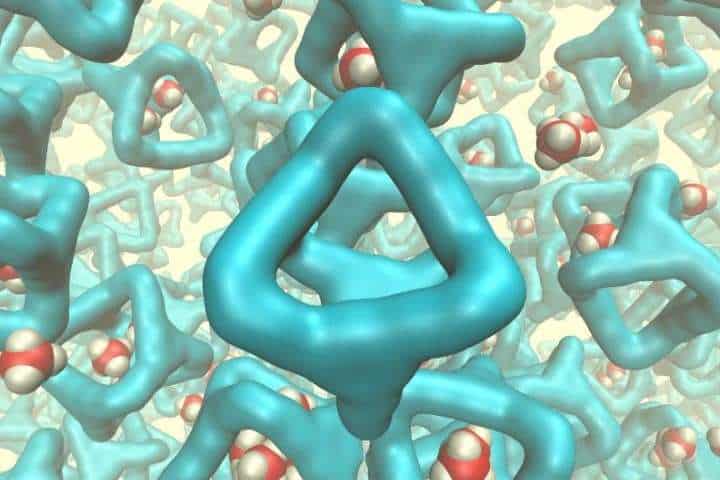Research at the Queen’s University Belfast has produced a major (and mind-bending) breakthrough, in the form of the first synthesized porous liquid. The new material has the potential for a massive range of new technologies including carbon capture.

Researchers at Queen’s University Belfast, Northern Ireland, UK, have made the world’s first porous liquid by designing a molecule shape that can’t occupy space efficiently, thus creating ‘holes’ in the liquid.
Image via phys
Researchers in the School of Chemistry and Chemical Engineering at Queen’s, along with colleagues at the University of Liverpool and other international partners have created the new liquid and found that it can dissolve an unusually large quantity of gas.The secret? Gas molecules are shaped into little cages that trap gases in ‘holes’ in the liquid.
“Materials which contain permanent holes, or pores, are technologically important. They are used for manufacturing a range of products from plastic bottles to petrol. However, until recently, these porous materials have been solids,” says Professor Stuart James of Queen’s School of Chemistry and Chemical Engineering.
“Liquid solvents, rather than porous solids, are the most mature technology for post-combustion capture of carbon dioxide because liquid circulation systems are more easily retrofitted to existing plants.”
The material is the result of a three-year research project and could pave the way towards many more efficient and greener chemical processes, the team citing carbon capture as one of their intended uses for the porous liquid.
“What we have done is to design a special liquid from the ‘bottom-up’ – we designed the shapes of the molecules which make up the liquid so that the liquid could not fill up all the space. Because of the empty holes we then had in the liquid, we found that it was able to dissolve unusually large amounts of gas. These first experiments are what is needed to understand this new type of material, and the results point to interesting long-term applications which rely on dissolution of gases,” he added
“A few more years’ research will be needed, but if we can find applications for these porous liquids they could result in new or improved chemical processes. At the very least, we have managed to demonstrate a very new principle – that by creating holes in liquids we can dramatically increase the amount of gas they can dissolve. These remarkable properties suggest interesting applications in the long term.”









